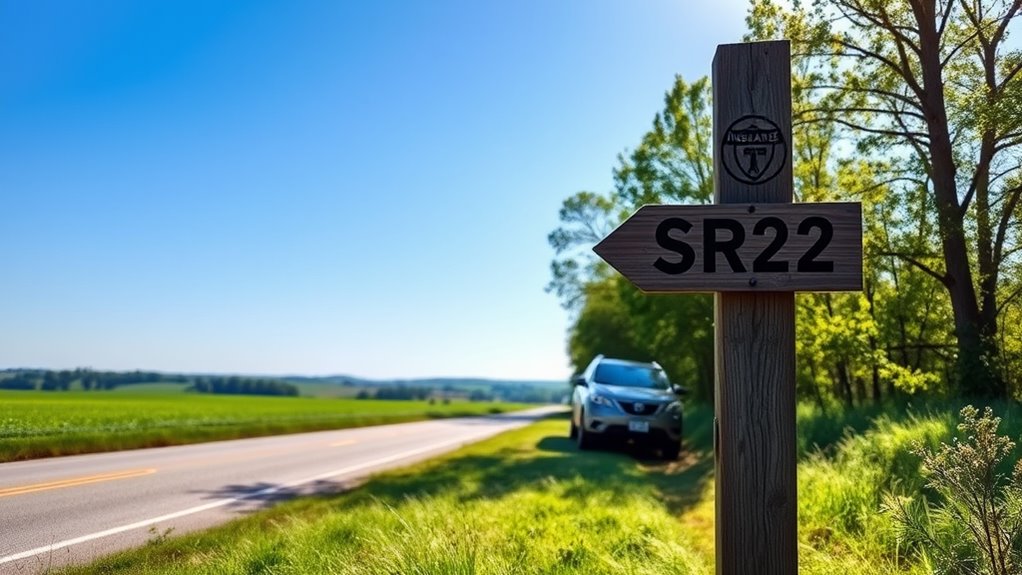Did you know that nearly one in every seven drivers in Missouri is considered high-risk due to traffic violations? If you find yourself in this category, understanding SR-22 insurance requirements is essential. This specialized insurance serves as proof of your financial responsibility and comes with specific conditions you must meet. But what exactly do those conditions entail, and how can they impact your driving future?
If you've faced serious traffic violations in Missouri, you might be required to obtain SR-22 insurance, which serves as proof of your financial responsibility rather than an actual insurance policy. This document is filed by your insurer to demonstrate that you meet the state's minimum insurance requirements.
It's important to understand that most drivers in Missouri won't need an SR-22 unless mandated by the Department of Motor Vehicles (DMV) or a court order. SR-22 insurance is specifically designed for high-risk drivers.
When you're required to file an SR-22, it certifies that you have the minimum coverage mandated by Missouri law. This includes at least $25,000 per person for bodily injury, $50,000 per accident for bodily injury, and $25,000 for property damage liability per accident.
Additionally, if you're involved in an accident with an uninsured or underinsured motorist, you must have $50,000 coverage per person and $100,000 per accident. These requirements guarantee that you're financially responsible in the event of an accident.
Coverage for accidents involving uninsured or underinsured motorists includes $50,000 per person and $100,000 per accident for financial responsibility.
Several serious traffic violations can trigger the need for an SR-22. Convictions for driving under the influence (DUI) or driving while intoxicated (DWI) are notable examples. Other infractions, such as reckless driving, failing to maintain insurance, or being involved in an at-fault accident with severe injuries, can also necessitate this filing.
If you've had your license suspended or revoked due to multiple infractions, you'll likely need an SR-22 to reinstate your driving privileges.
The costs associated with SR-22 insurance in Missouri can vary. On average, you'll pay around $1,025 annually for minimum coverage if you need an SR-22. If you opt for full coverage, expect to spend about $2,227 per year. SR-22 holders typically pay 43% more than drivers with clean records, making it essential to compare rates.
Additionally, insurers typically charge a filing fee for the SR-22, usually ranging from $15 to $25. Your insurance rates may fluctuate considerably depending on the nature and severity of your violations, making it important to shop around for the best rates.
To obtain SR-22 insurance, start by contacting an insurance provider that offers SR-22 filing services. It's necessary to verify that your policy meets Missouri's minimum insurance requirements.
You'll need to pay the SR-22 filing fee and confirm with the Department of Revenue that your SR-22 has been filed correctly. To avoid penalties, maintain your coverage throughout the required period, usually lasting two to three years, depending on the violation.
For instance, if your requirement stems from a DWI, the SR-22 is typically needed for two years.
If you don't own a vehicle but frequently drive borrowed or rented cars, a non-owner SR-22 insurance policy might be ideal for you. This policy provides secondary liability coverage and is often cheaper than standard car insurance.
However, if you decide to buy a vehicle, you'll need to shift to a standard owner's insurance policy. Understanding these requirements can help you navigate the complexities of SR-22 insurance in Missouri.
Conclusion
In summary, while you might think SR-22 insurance is just another burden, it's actually an essential tool for regaining your driving privileges and demonstrating financial responsibility. By understanding Missouri's requirements, you can navigate this process more smoothly. Remember, maintaining coverage for the mandated period can help you avoid more severe penalties down the line. Embracing this requirement can ultimately lead to lower rates and a brighter driving future.









